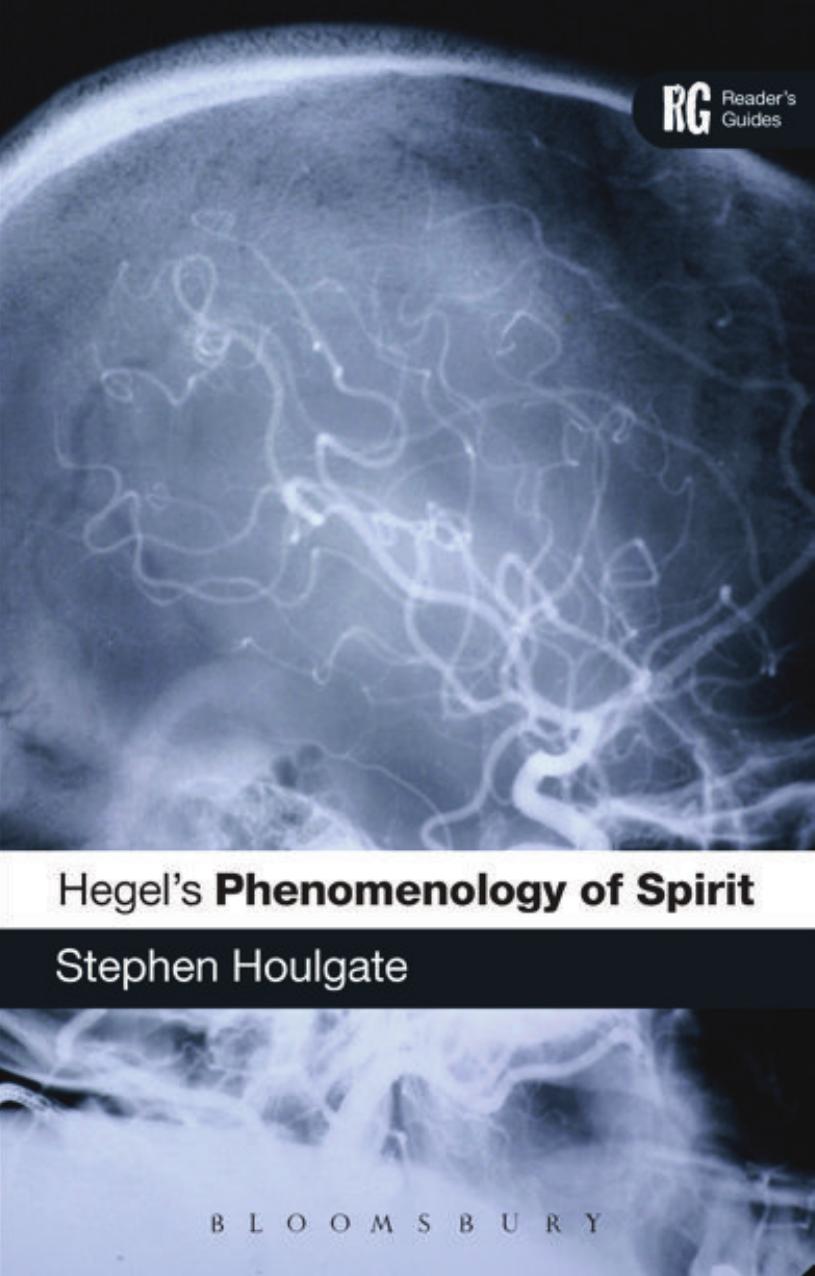Hegel's 'Phenomenology of Spirit': A Reader's Guide by Stephen Houlgate

Author:Stephen Houlgate [Houlgate, Stephen]
Language: eng
Format: epub, pdf
Published: 0101-01-01T00:00:00+00:00
Study questions
1 Why does the life and death struggle arise?
2 What role does the fear of death play in the self-consciousness of the slave?
Stoicism, scepticism and the unhappy consciousness
Stoicism
The relation between the master and the slave is asymmetrical. The master, in contrast to the slave, is unable to give positive, objective expression to his freedom through labour and so enjoys nothing but his own mastery. The slave, on the other hand, is conscious, like the master, of being a pure self-consciousness, a pure I, and so incorporates the core of the master’s self-understanding into his own (albeit in the form of the fear of death). For this reason, Hegel maintains, the slave, but not the master, is ‘a truly independent consciousness’ (§193/134). Indeed, the slave embodies in its true form the freedom and independence to which the master himself (mistakenly) lays claim. The master and slave do not, therefore, simply coexist side-by-side, but there is a logical progression from the former to the latter. We phenomenologists thus now move to a new shape of self-consciousness that takes up and renders explicit what is implicit in the experience of the slave.
The slave, we recall, sees himself and his own freedom embodied in the new form he has given to the thing. This thing, however, is not itself something self-conscious: it is simply a thing that has been transformed by the slave’s labour. The slave encounters self-consciousness in the master. Hegel notes, therefore, that, for the slave, the two processes of seeing himself in the object and seeing the object as a self-consciousness ‘fall apart’. Yet the slave is, of course, himself a self-consciousness. Implicitly, therefore, if not explicitly, in seeing himself in the object he is seeing his own self-consciousness in it. Hegel thus writes that the ‘form’ of the thing and the ‘being-for-self’, or self-consciousness, of the slave are ‘for us, or in themselves [an sich], the same’ (§197/137). We phenomenologists now move, therefore, to a new shape of self-consciousness for which they are explicitly the same. Since this new shape sees its own self-consciousness explicitly in the thing to which it relates, it does not need to see it embodied in another self. It is thus no longer one of two selves, like the master and the slave, but stands in relation only to things.
It is important to stress that the object to which self-consciousness now relates is a thing, and so is not itself self-conscious. Yet how does this new self see its own self-consciousness explicitly in a thing that lacks such self-consciousness? It does so by recognizing the thing to have the very same form or substance as itself. The slave –whom we have now left behind – stands in relation to an object that is independent of him and, through his labour, gives that object a new form. This form belongs to the independent object, not to the slave, although it objectifies for the slave his own freedom. The new self, by contrast, sees in the object a form or substance that belongs to self-consciousness itself as much as to the object.
Download
Hegel's 'Phenomenology of Spirit': A Reader's Guide by Stephen Houlgate.pdf
This site does not store any files on its server. We only index and link to content provided by other sites. Please contact the content providers to delete copyright contents if any and email us, we'll remove relevant links or contents immediately.
The remains of the day by Kazuo Ishiguro(8815)
Tools of Titans by Timothy Ferriss(8211)
Giovanni's Room by James Baldwin(7188)
The Black Swan by Nassim Nicholas Taleb(7009)
Inner Engineering: A Yogi's Guide to Joy by Sadhguru(6722)
The Way of Zen by Alan W. Watts(6503)
Asking the Right Questions: A Guide to Critical Thinking by M. Neil Browne & Stuart M. Keeley(5629)
The Power of Now: A Guide to Spiritual Enlightenment by Eckhart Tolle(5603)
The Six Wives Of Henry VIII (WOMEN IN HISTORY) by Fraser Antonia(5394)
Astrophysics for People in a Hurry by Neil DeGrasse Tyson(5130)
Housekeeping by Marilynne Robinson(4328)
12 Rules for Life by Jordan B. Peterson(4249)
Double Down (Diary of a Wimpy Kid Book 11) by Jeff Kinney(4204)
The Ethical Slut by Janet W. Hardy(4172)
Skin in the Game by Nassim Nicholas Taleb(4161)
Ikigai by Héctor García & Francesc Miralles(4123)
The Art of Happiness by The Dalai Lama(4063)
Skin in the Game: Hidden Asymmetries in Daily Life by Nassim Nicholas Taleb(3929)
Walking by Henry David Thoreau(3892)
